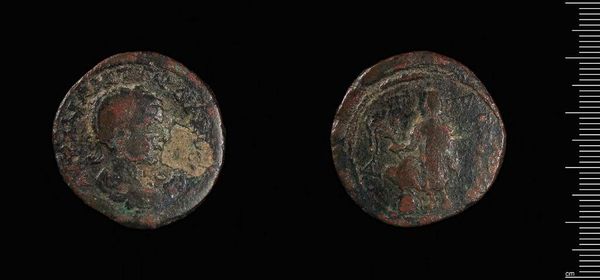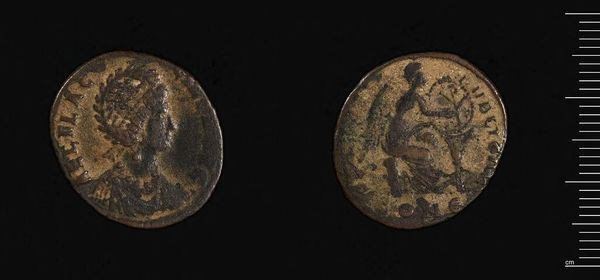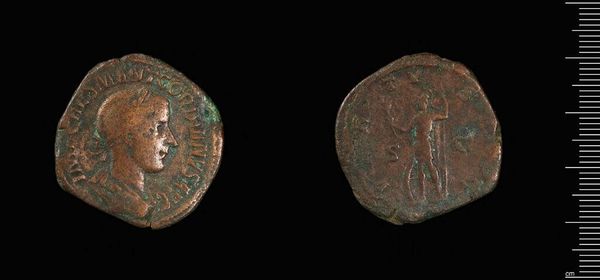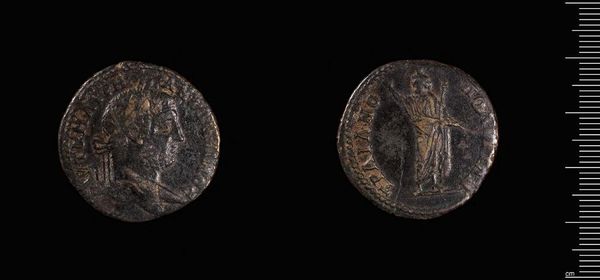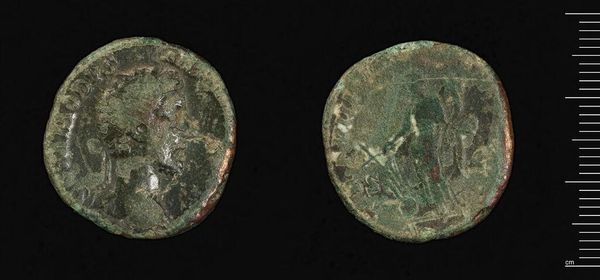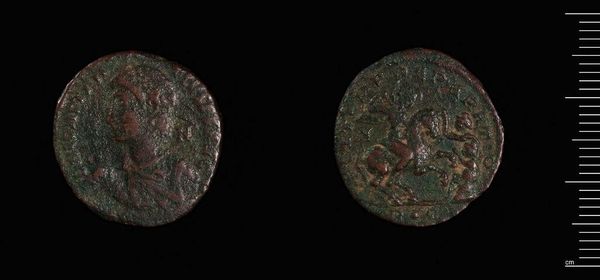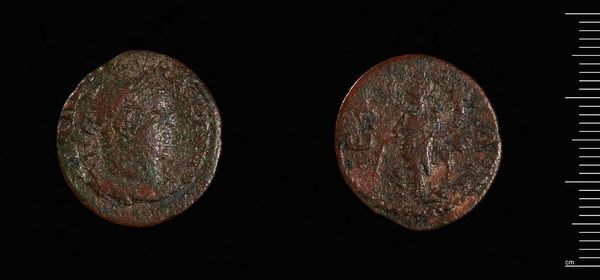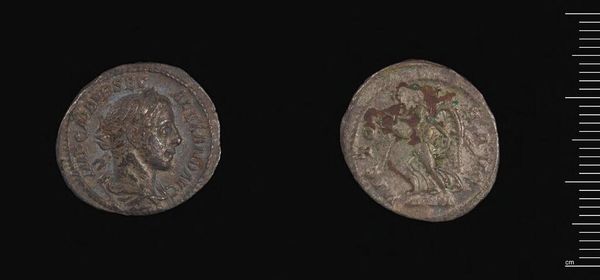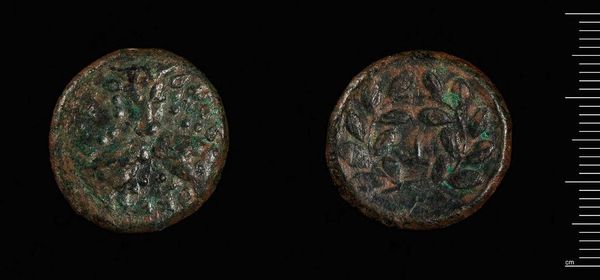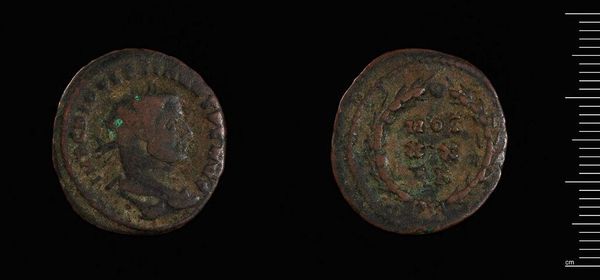
Dimensions: 17.36 g
Copyright: CC0 1.0
Curator: Here we have a Large Follis of Anastasios I, a Byzantine coin currently residing at the Harvard Art Museums. It's remarkable how such a small object can carry so much history. Editor: My first impression is its somber tone; the deep browns and greens evoke a sense of antiquity and the weight of empires past. Curator: Indeed. The coin is attributed to Anastasios I himself, depicting his effigy. This signifies not only his reign but also the transition from the late Roman to Byzantine monetary systems. Editor: I see that transition as a reflection of broader power dynamics. Coins like these weren’t merely currency, they were instruments of imperial propaganda, projecting power and legitimacy across the Byzantine world. The symbolism embedded had a direct impact on social relations. Curator: Absolutely. The imagery on the reverse, a large "M" flanked by stars, is rich with symbolic weight, likely representing monetary value and divine favor. The numismatic symbols are testaments to cultural memory. Editor: Right, and understanding these symbols offers insights into the economic policies and social values that shaped Byzantine society. This wasn't just about trade; it was about control and shaping identity. Curator: It really makes you consider how objects, even mundane ones, are imbued with the spirit of their age. Editor: Precisely, and how their meaning continues to evolve through contemporary analysis and interpretation.
Comments
No comments
Be the first to comment and join the conversation on the ultimate creative platform.


